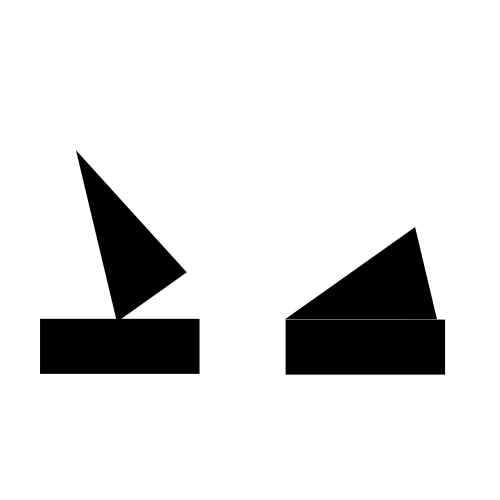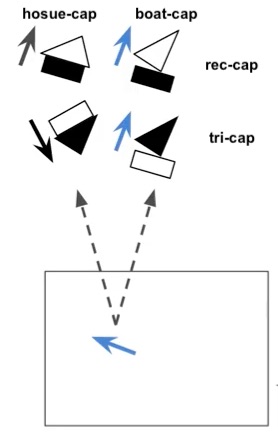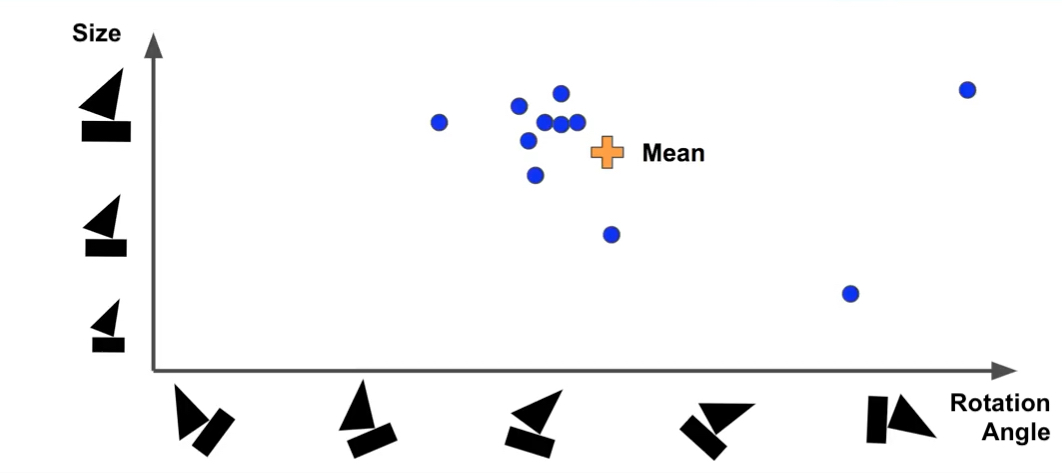Dynamic Routing Between Capsulesl: Difference between revisions
| Line 11: | Line 11: | ||
== Motivation == | == Motivation == | ||
Why CNN doesn't always work? | |||
In CNN, there's always at least one pooling stage. If we take max-pooling method as an example, the idea is to take the maximum value from a neighborhood, so that when the information is passed to the next layer, we can adjust the dimensions whatever ways we want, and in most cases, we want to reduce the number of dimensions because we always want to save computations. The reason behind this kind of pooling method is based on the correlations within adjacent area. There’re two examples: one (Netflix users’ preferences )is from the example in Ali’s Youtube videos, the other is about the observation of pictures. We will illustrate these two examples in class. | |||
Although pooling methods save lots of computational power, but it leads the whole CNN methods (i.e. the machine) towards recognizing the local patterns in an image to make judgement instead of looking at the whole picture. Our goal is to train the machine do things in a way, if not beyond human, resembles human thinking. | |||
So, how to train the machine to look at the whole picture? | |||
In this paper, Professor Geoffrey Hinton gave a solution—using a group of neurons as a capsule to pass the information of orientation and pose. | |||
== Introduction to Capsules and Dynamic Routing == | == Introduction to Capsules and Dynamic Routing == | ||
Revision as of 15:59, 20 March 2018
Group Member
Siqi Chen, Weifeng Liang, Yi Shan, Yao Xiao, Yuliang Xu, Jiajia Yin, Jianxing Zhang
Introduction and Background
Motivation
Why CNN doesn't always work?
In CNN, there's always at least one pooling stage. If we take max-pooling method as an example, the idea is to take the maximum value from a neighborhood, so that when the information is passed to the next layer, we can adjust the dimensions whatever ways we want, and in most cases, we want to reduce the number of dimensions because we always want to save computations. The reason behind this kind of pooling method is based on the correlations within adjacent area. There’re two examples: one (Netflix users’ preferences )is from the example in Ali’s Youtube videos, the other is about the observation of pictures. We will illustrate these two examples in class. Although pooling methods save lots of computational power, but it leads the whole CNN methods (i.e. the machine) towards recognizing the local patterns in an image to make judgement instead of looking at the whole picture. Our goal is to train the machine do things in a way, if not beyond human, resembles human thinking. So, how to train the machine to look at the whole picture? In this paper, Professor Geoffrey Hinton gave a solution—using a group of neurons as a capsule to pass the information of orientation and pose.
Introduction to Capsules and Dynamic Routing
In the following section, we will use a example to classify images of house and boat, both of which are constructed using rectangles and triangles as shown below:

Structure of Capsules
Hierarchy of Parts
Primary Capsules
Prediction and Routing
In the above boat and house example, we have two capsules to detect rectangle and triangle from the primary capsule respectively. The prediction contains two parts: probability of existence of certain element, and the direction. Suppose they will be feed into 2 capsules in the next layer: house-capsule and boat-capsule.
Assume that the rectangle capsule detect a rectangle rotated by 30 degrees, this feed into the next layer will result into house-capsule detecting a house rotated by 30 degrees. Similar for boat-capsule, where a boat rotated by 30 degrees will be detected in the next layer. Mathematically speaking, this can be written as: [math]\displaystyle{ \hat{u}_{ij} = W_{ij} u_i }[/math] where [math]\displaystyle{ u_i }[/math] is the own activation function of this capsule and [math]\displaystyle{ W_{ij} }[/math] is a transformation matrix being developed during training process.
Then look at the prediction from triangle capsule, which provides a different result in house-capsule and boat-capsule.

Now we have four outputs in total, and we can see that the prediction in boat-capsule strongly agree to each other, which means we can reach the conclusion that the rectangle and triangle are parts of a boat; therefore, they should be routed to the boat-capsule. There is no need to send the output from primary capsule to any other capsules in the next layer, since this action will only add noise. This is the procedure called routing by agreement. Since only necessary outputs will be directed to the next layer, clearer signal will be received, and more accurate result will be produced. To implement routing by agreement, a clustering technique will be used and introduced in the next section.
Clustering and Updating

Suppose we represent capsules in the above graph, with x-axis representing rotation angle of the boat and y-axie representing the size. After find out the mean of data, we need to measure the distance between mean and prediction points on the graph by applying Euclidean distance or scalar product. The purpose of this step is to understand how much each prediction vector agrees with the mean, so that the weights of predicted vector can be output and updated. If the prediction matches mean well (i.e. the distance is small), more weights will be assigned to it. After getting the new weights, a weighted-mean will be computed, and it will be used to compute the distance again, and updated iteratively until reaches a steady state.
Mathematically speaking, the procedure starts with 0 weights for all prediction initially. Round1:
bij = 0 for all i and j ci = softmax(bi) sj = weighted sum of predictions of each capsule in the next layer vj = squash(sj), which will be the actual outputs of the next layers
After round1, we will update all [math]\displaystyle{ b_{ij} }[/math] as: [math]\displaystyle{ b_{ij} += \hat{u}_j * v_{ji} }[/math], then perform the next steps iteratively.